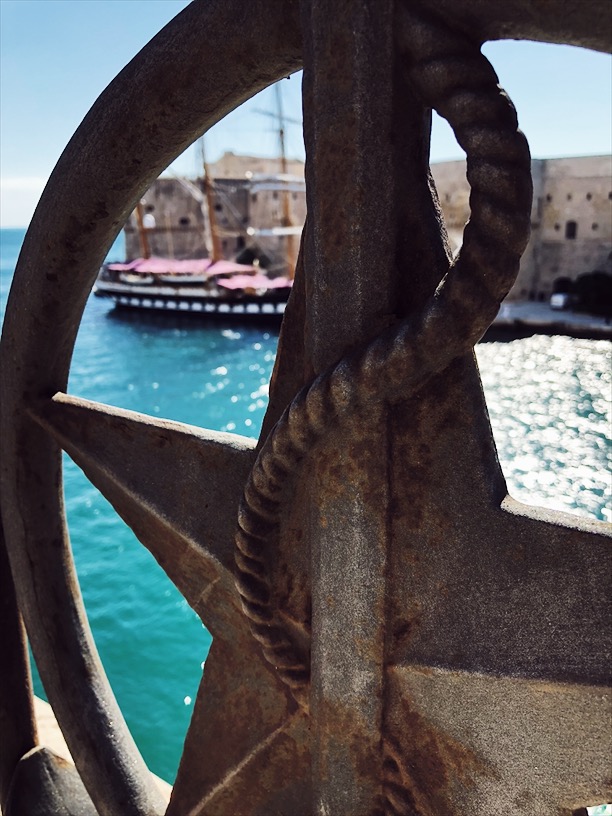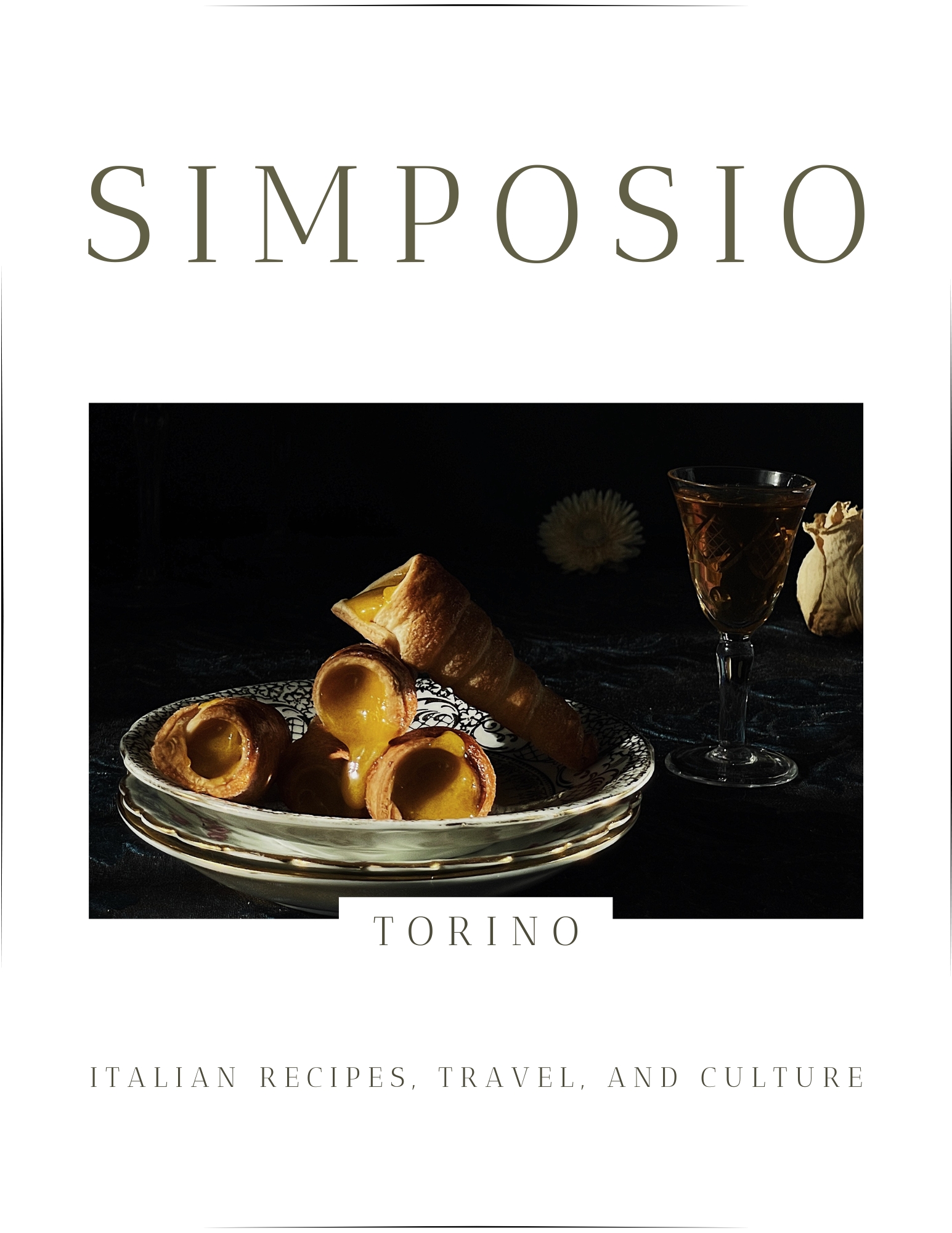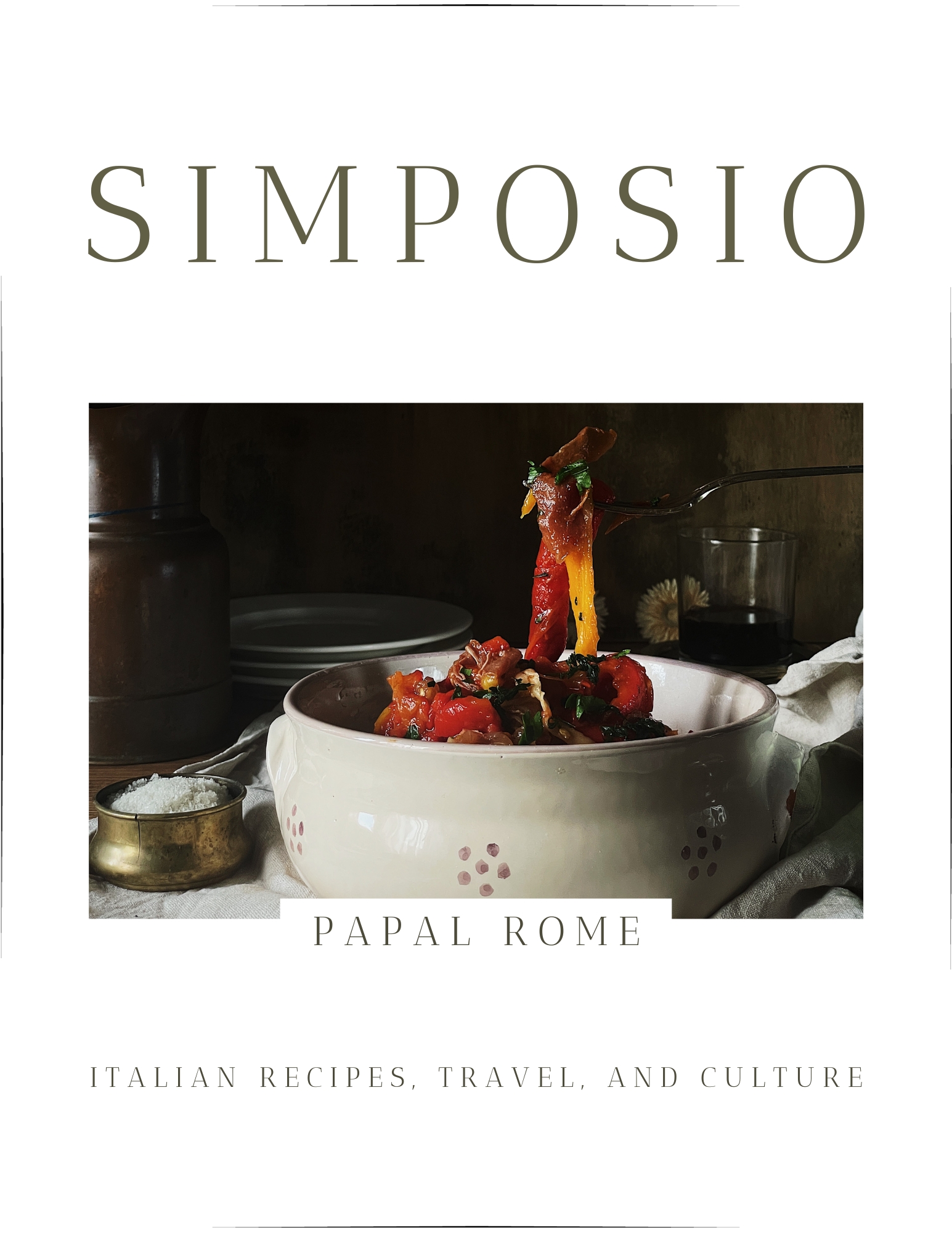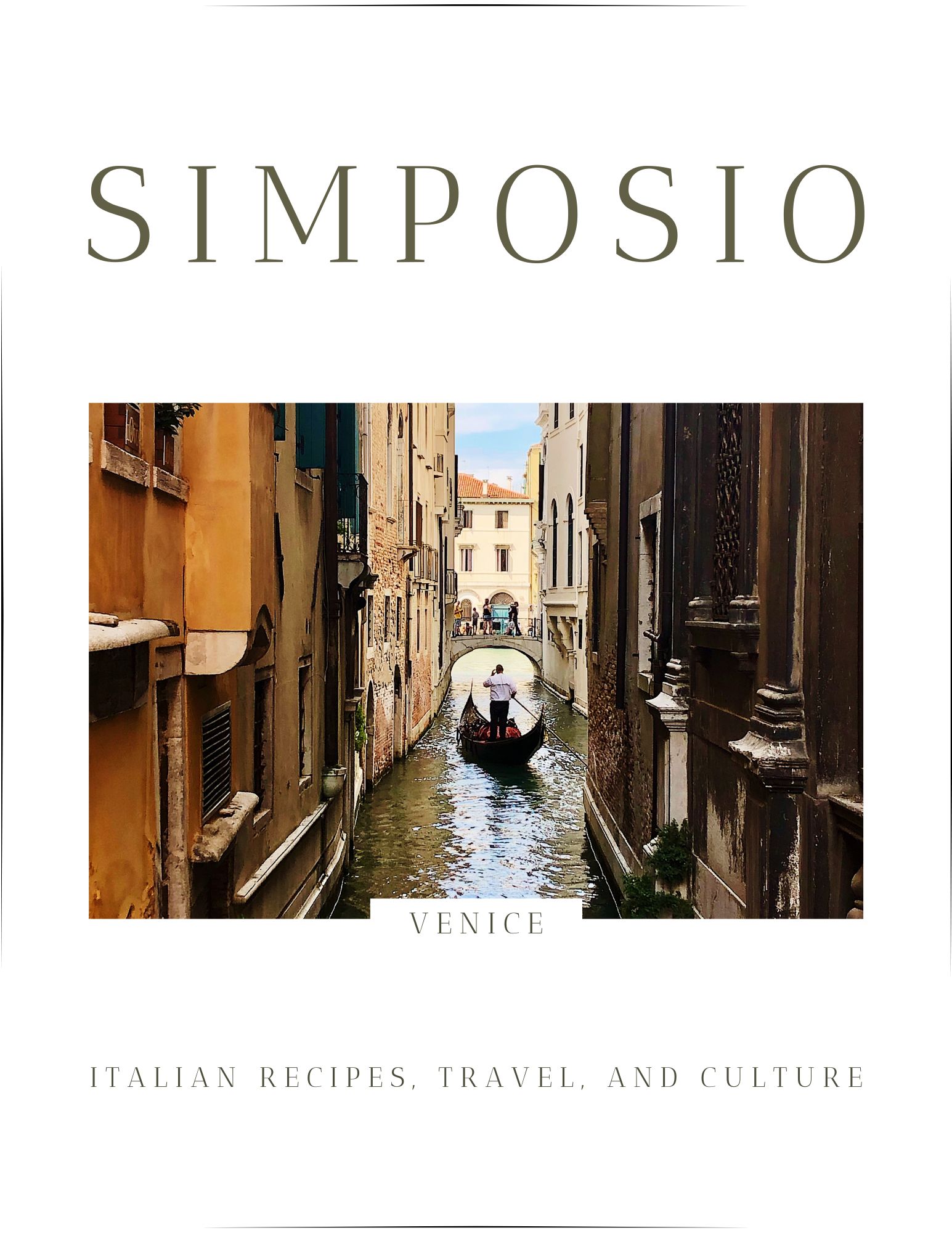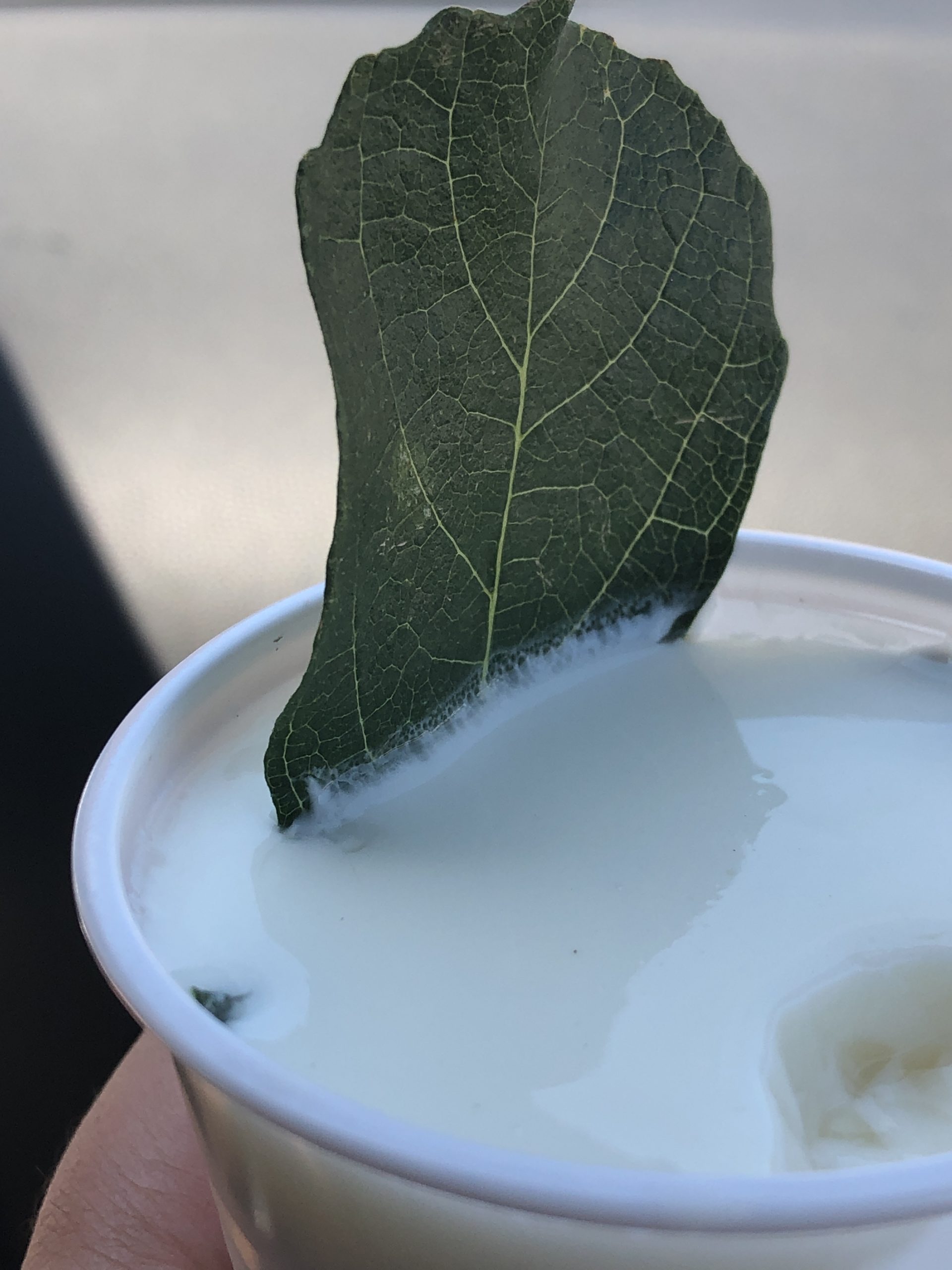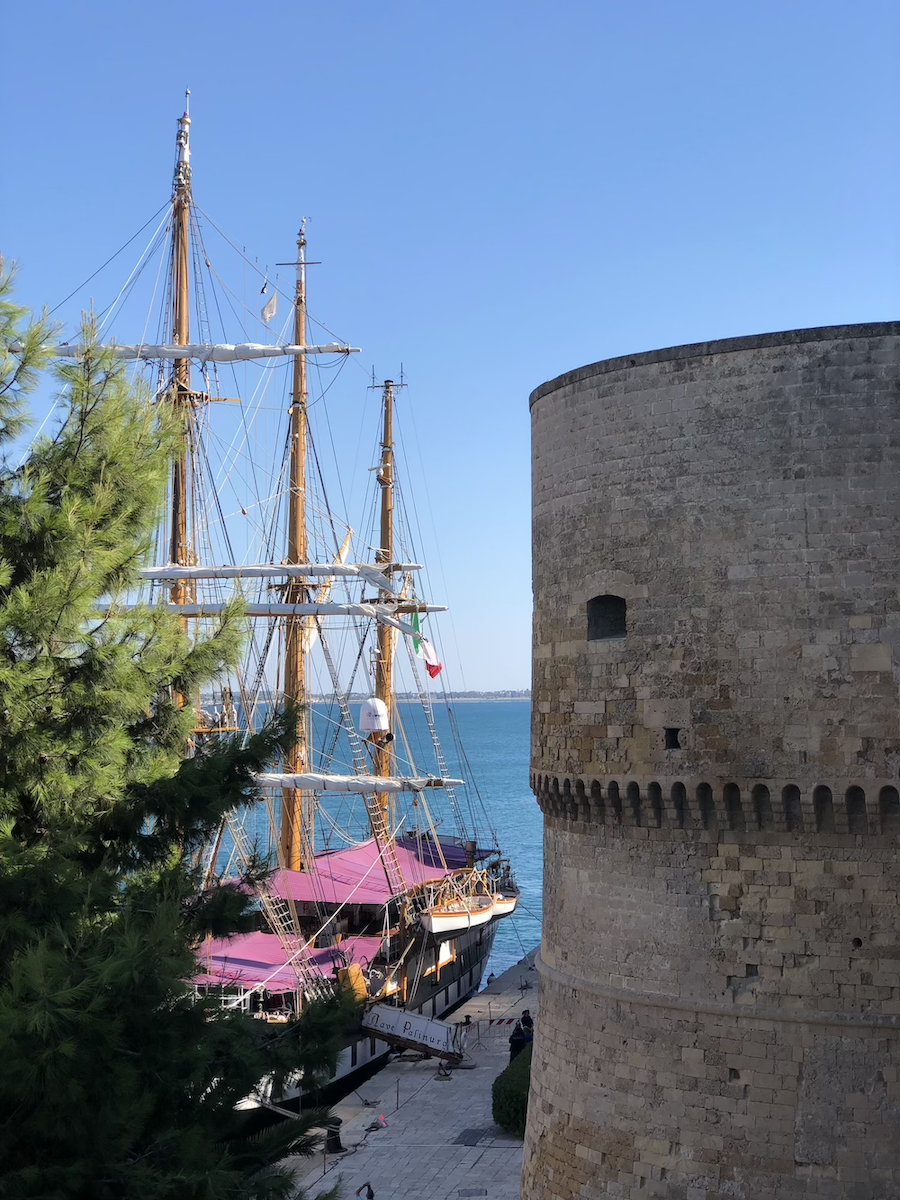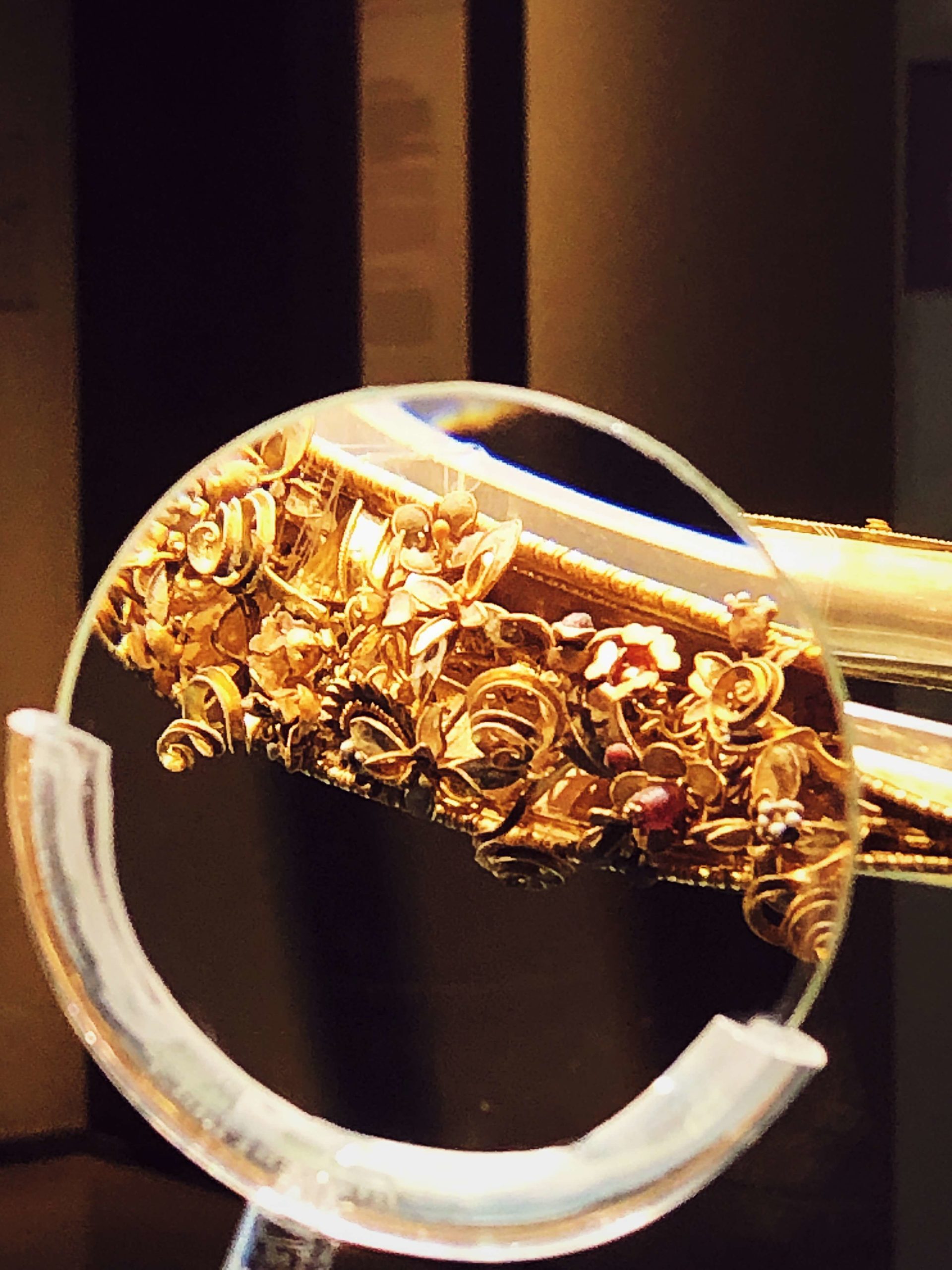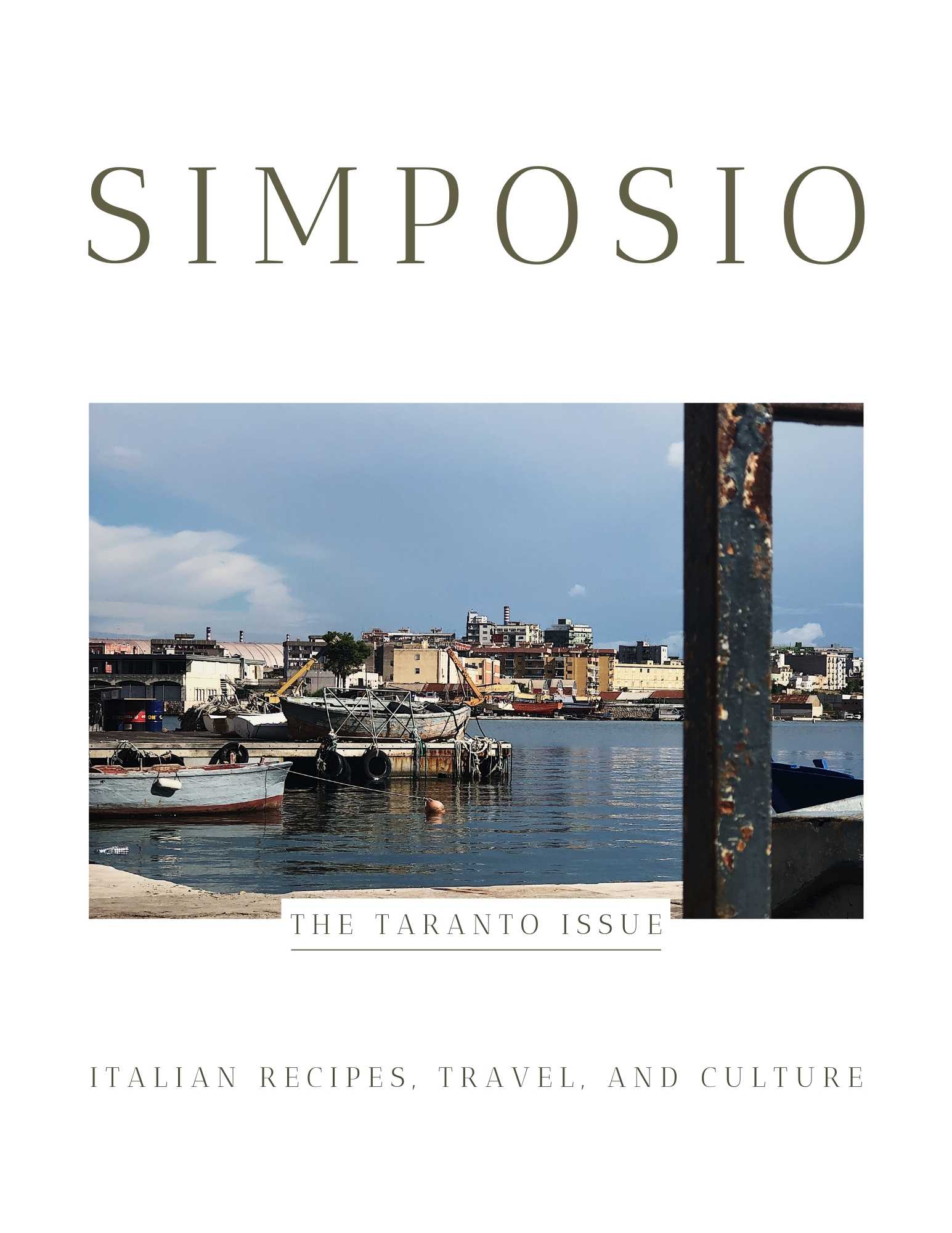In this post, I’ll share with you what Taranto, Italy is known for, what to see, when to go, and what to eat in this little-known, greatly rich in culture, Puglia travel destination.
This article first appeared in Taranto's SIMPOSIO, a slow travel cookbook series about Italy - made in Italy!
What is Taranto, Italy known for and why it’s worth visiting
Taranto is the out-of-touristic-routes destination for travelers that want to see the authentic Puglia. It will explode shortly, believe me, so consider it one of those places to visit before hotel chains colonize it.
Where is Taranto in Italy?
Taranto is the Ionian seaside city in the northwestern end of Salento, one of the subregions of Puglia and the the historic capital of Magna Graecia, the Greek colonizing reign of Italy.
Taranto v/s Salento
Taranto is also my husband’s birth town, so I’m biased, but he knows, and at this point, you should too, that I speak my mind, even when it is uncomfortable.
I was not too fond of Taranto when I first visited – more than a decade ago.
I loved Puglia, but Taranto… not that much.
Puglia was all you could ask from Southern Italy: overwhelming flora, paradisiac beaches, delicious and fresh food, and penniless youth camping in muddy groves, so upon awakening, hosts could dive into painfully beautiful grottos and swim in turquoise waters. It was the land of Pizzica nights: a mesmerizing jumping and stepping traditional tarantella. The gatherings were held on the beach or in the piazzas of unknown tiny villages, encircled by street-food vendors and artisanal bracelets and ceramic pot stands. And pot of another nature, given the average age.
If I had ever dreamed of living the flower-power sixties, this was the closest I could get.
My then-boyfriend and I were penniless as well, and we would’ve ended in one of those sloppy camps if it weren’t for his mother, Cinzia. She had won a holiday in a family resort with her hairdresser collection points – you have no idea how fundamental hairdressers are in the life of Apulian women – and had gifted it to us. “Go see the rest of Salento.” Looking back, I’m surprised at how she had immediately spotted my famine for traveling.
We hated the resort life, the aperitivo games, and the children’s noise around the swimming pool but loved having a clean room and a private bathroom. We left in the morning and came back for dinner. Then left and came back early in the morning. Or skipped dinner altogether.
We joined our friends in their precarious tents to dive from the cliffs and burn our skin black. At night, we toggled between the Pizzica concerts and the Salento towns: Gallipoli, the white lady, and Lecce, the baroque queen. We could eat pizza or fish for the little pennies we had and drink tons of “vino della casa” the homemade wine. Primitivo if red, Locorotondo if white.
We were savoring our first bites of liberty and the careless freedom of those few years before you leave your parent’s house. When you have a car, a little money from your first paychecks, and no concerns about the future.
Salento represented it all.
Taranto didn’t.
Is Taranto dangerous?
The city, at the time, was a little dangerous, or so my boyfriend and future father-in-law portrayed it. They thought I could get in trouble if left alone, even to grab a tea at the cafe downstairs from their house!
I was oppressed and hated Taranto with all my heart.
Plus, there was the exasperating summer lifestyle of Tarantini. Wake up, go to the beach, eat, beach, shower, dress, drive to a place for dinner, go dancing, have cocktails, dance more, chat until four in the morning. Wake up at nine and do it all over again.
It wasn’t my style, but I was young, and NO was a bad word. Anyway, growing up and revealing – slowly to not frighten them – my spiky character to Luca’s family and friends, I gradually conquered my independence and imposed more of my way.
I plunged into the Ori (gold jewels) museum with my mom when she first visited. It was the trigger I needed to initiate and address my curiosity.
I began exploring the city. I asked our friends to guide me through the old town, to talk to me about their families, they’re nonnas and nonnos, they’re traditions and heritage. Still nowadays, when we drive south for the Christmas or summer holidays, I arrive with a long list of new places to go, foods to try, and adventures to experience.
The more I dug, the more I was astonished.
From then on, it’s been endless research and adventures.
Starting with sipping tea, alone, at a cafè – not the one downstairs but one a little bit farther! And ending on the roof terraces of the old city, under the stars, having delicious seafood and iced wine. Greek spirits surrounded me, mermaids chanted, and locals yelled in the streets. I was finally getting to know the grandiosity of Taranto. The extraordinary past, the vicissitudes, the complicated present, and the unique, sometimes prickly, way it conquers your heart.
So, no, Taranto, today, is not dangerous. As a woman, you can go around the city alone without a whiff of trouble. As in any place in the world, I wouldn’t recommend visiting on your own the suburbs or the old city after, let’s say, two o clock in the morning.
WHAT TO EAT IN TARANTO
Food in Taranto is varied: you can spend a life there without getting anywhere near bored. And if you do, you move to the surrounding towns and countryside, and find more!
The land is beyond fecund and gives produce you won’t find elsewhere.
- Lampascioni, for example, are tiny onions that taste something in between onions and garlic. Delicious when preserved in olive oil: eaten as an aperitivo or with Fave e Cicoria.
- Or Caroselli: fat, juicy, refreshing cucumbers, easily confused with Barattieri (also called Pagnottelle – and many other ways), same species, only tasting more like a white melon, therefore sweeter and smoother.
- But also unique varieties, like Manduria’s tomatoes.
- As the whole Puglia, Taranto is world-famous for its cheeses, especially fresh like Burrata, its creamy inside Stracciatella, and Giuncata. I believe ninety percent of the meals I have when in Taranto are opened by a cheese plate. If not, it means they’ll accompany the second course.
- Fish is the other ingredient of practically every day’s menu. Mussels are served almost weekly, cooked in tomato sauce, au gratin, or as the fishermen do: raw with lemon juice.
- Octopus, grilled or boiled, is usually served in a salad.
- You’ll be surrounded by baked or grilled and simply seasoned with herbs, salt, and olive oil fishes from the Mediterranean waters: red snappers, sea breams, groupers, red mullets, and anchovies.
- And seafood: calamari, shrimps, and oysters.
- Look for Donzelle, rainbow wrasse (google them, they’re beautiful!), popularly called with a filthy name, something to do with kings’ attributes – you’ll have to ask the fishermen when you go for details.
- For sea urchins, you must patiently wait the season, from February to April (months with an R, is said to remember). You rarely cook them at home: they’re best consumed raw, on the beach, with a bottle of Raffo beer and bread for dipping. Or delicately cooked by master cooks in rural restaurants to season spaghetti.
- Finally, during summer, people go to beach stalls to eat sea slugs seasoned with lemon juice, olive oil, and parsley.
- Tarantini alternate fish with meat. Classic cuts, but also unexpected. Horse meat is traditional to all the region, but I must confess I’ve never had the guts. I did instead, and quite enjoyed it, for Marro: a roll of lamb innards, stuffed with offals, garlic, herbs, and pecorino, all bagged in the animal’s caul (the thin, fatty membrane that surrounds the stomach). It’s usually made and given to friends and family for Christmas.
- They also enjoy Patedde, land snails, sometimes with a simple tomato sauce, other times “Alla Cacciatora”(the hunter’s way), with bay leaves, onion, olive oil, and vinegar.
- Pasta is cooked daily, seasoned with fresh tomatoes, or sauce, vegetables, and, on occasions, with fish or meat ragus. Orecchiette is the typical shape, or to be more accurate, Chiancaredde – flatter and slightly larger.
- Bread is salty, much more than in other regions. But bakeries also churn out Friselle, crunchy Taralli – tiny bagels with a cracker-like consistency -, Puccia bread, and Panzerotti.
- This brings us to Taranto’s snacks. If not devoured for a take-away, easy dinner, Panzerotti (smaller in this case) are a favorite street-food indulgence. A walk and a gelato are another weekend afternoon or after-dinner ritual.
- On the beach, vendors sell coconut, like everywhere in Itay, but also fresh almonds, mulberries, or Pampanelle! When you see a Pampanella, you first think it’s yogurt. A cow (or mixed) milk cheese in a plastic cup with a fig leaf (called Pampano, thus the name) or wrapped in it. And it is very similar to yogurt, only with the herbaceous aroma and a bitter note from the leaf’s latex. It is smooth and savory, light and refreshing, perfect after a day under the scorching Apulian sun.
WHAT TO SEE IN TARANTO
Here’s a sweet and short list of the things you must absolutely see in Taranto.
But before getting started, there’s a piece of fundamental information you need: Taranto is divided into the New and the Old City. Bridges connect the mainland to Taranto Vecchia, a city on an island in the Gulf of Taranto. The inner gulf waters are called Mar Piccolo, small sea, and the outside are called Mar Grande, big sea.
- The Ponte Girevole, the swinging bridge. The metallic colossus is the pride of Tarantini. Two giant arms connect the New City to the Old City and the Mar Piccolo to the Mar Grande. New and old, small and big, close and open: it must be its function of conjunction between opposites to make it so dear. In a city constantly poised and often divided, it must be a relief to know there is this mighty engine that keeps all the pieces together. The bridge opens extraordinarily for the passage of big navy vessels and yearly on May 8th, for the naval procession of San Cataldo.
- Past the bridge, turn right, and walk towards the sea. You’ll meet the old city’s fishermen returning from their fishing expeditions and showcasing the catch of the day. You’ll see them converse animatedly, handling the nets and adjusting their tiny boats. And you’ll see old ladies negotiating and purchasing, some elegantly dressed, some in the typical house wear: floral apron-dresses and clogs. It’s one of my favorite scenes in the city: a glimpse of the past and a minute of consciousness that it is not even remotely gone. Yes, Taranto is a place to go if you want to witness authentic Southern Italy.
- You’ll also notice many wooden stakes spilling out of the water of the Mar Piccolo: mussel “fields” for which the city is worldwide known. The mussels are so delightful – full-bodied and sweeter – because of the thirty-two “citri” of the Mar Piccolo: under-the-sea freshwater springs that influence the organoleptic qualities.
- If you walk the uphill stepped alley that takes you to the upper side of the island you’ll end your walk in front of the baroque facade of San Cataldo, the cathedral of the old city. Also, the most ancient Church in Puglia, with traces of the Byzantine and Norman dominations.
- Via Duomo is the main street of the old city. You are now in the upper side of the island, where nobles resided, and it’s impossible to ignore as you sight the palaces and sneak inside the courtyards or the entrances: traces of mosaics and frescos, and sometimes a majestic chandelier.
- Don’t miss a visit to an Ipogeo. Premise: almost everything built on the old town island was made by excavating the calcareous underground. This gave both the construction materials and underground rooms used as cellars, oil mills, barns, or carbon deposits. There’s a whole underground network of cellars and cuniculus that connect palaces, churches, and monasteries.
- The two Doric columns. Until a few years ago, it was believed they were the remains of a temple dedicated to Poseidon, father of Taras. Recent studies lead to another deity: Persephone. Anyway, these are the oldest ruins of a Doric temple in all the Magna Graecia.
- When you turn your gaze towards the sea, you’ll see it, the second pride of Tarantini: the Aragonese castle, actual name Castel Sant’Angelo. The castle was rebuilt in 1492 over a Byzantine, tenth- century castle, in “carparo,” the calcareous rock we have seen many times – both in Taranto and Puglia -, by Ferdinand of Aragon. Instead of tall and slender towers, it had five large and flat to defend from gun fires, the new menace.
- There’s another unmissable place, in the new city, to visit before leaving Taranto: the MARTA museum. One of Italy’s most important archeology museums, covering a time-lapse from prehistory (fifth millennium, B.C.) to the Roman empire. You’ll find ruins, everyday life objects, statues, villa mosaic pavements, and grave goods. But one room is overly special: the ORI. Many of the jewels in this room belong to funerary trousseaus from the Hellenistic era: bracelets, rings, earrings, and tiaras probably never worn but simply commissioned to enrich the noblewomen’s graves. Thanks to the Greek influences and to a wealthy population, the jewelry art in Puglia was phenomenal: natural, floral, marine motives, geometric elements, and minute details embroidered in gold, nestled with pearls and colorful gems. No surprise, the Maison Dior draw inspiration from this collection for one of their latest lines.
WHAT TO BUY IN TARANTO
Since the jewels of the MARTA museum are well guarded and safe inside glass cases, the only possibility to take something related to them is to direct yourself to one of the jewelers in Taranto that realize embellishments inspired by the ancient collection – look for them in Via Duomo and ask around!
But don’t limit your shopping to jewels: fill your suitcase with wine, olive oil, Friselle, and the fabulous wines of the lands around Taranto: both the old and the new city are full of bakeries and wine shops waiting for you.
WHEN TO VISIT TARANTO
A great idea is to visit Taranto for the Easter processions. Today, only two brotherhoods offer an Easter procession to the ravenous eyes of locals and tourists, both with stunning results: the Processione Dei Misteri and the Processione Dell’Addolorata.
The Brotherhood of Carmine, which fellows you’ll recognize by the cream cape and black buttons, carry the statues and crosses on the two-kilometers Processione Dei Misteri on Good Friday. It takes them fifteen exasperating hours, from Friday afternoon to Saturday morning, because they do the Nazzicata: a slowly rocking walk that advances only a few centimeters at a time.
Not only do the devotees walk in slow motion, but they are barefoot. After all, they’re asking for God’s forgiveness. They are dressed in a white robe and hooded – not those who carry the statues -, with just two microscopic eye slits to discern their way. They are also crowned with spines – not really, but something symbolic -, and they have a black cap hanging on their back trimmed with light blue ribbons. They wear white gloves and a rosary as a belt. They also carry a long staff representing those of the pilgrims. The gloom is reinforced by bands playing funeral marches.
This is the last Easter procession: but there’s much more.
On Maundy Thursday, Perdoni, pairs of pilgrims dressed as described above, always swaying from side to side and shoulder to shoulder, begin their atonement. Every fifteen minutes, a couple exits the Chiesa di Maria Santissima del Monte Carmelo – the same of the Misteri procession. Some couples pilgrimage all the churches in the new city, others the ones in the old town.
In each, they find altars decorated with fresh flowers, candles, fabrics, paintings, and small papier-mache statues.
But you’ll have real chills when you experience the Addolorata procession in the old town. Candlelight and tragic moaning from the gloom are hard to ignore, hard to stay impassive. The Processione Della Madonna Addolorata starts at midnight on Maundy Thursday. From the balcony of the Church of San Domenico, in the old town. The procession is about four kilometers long and lasts fourteen hours, until two of Friday’s afternoon.
In honor of San Cataldo, the city’s patron, celebrations are held from May 8th to 10th.
The first day opens with the ceremony “d’u pregge,” of privilege. The statue of San Cataldo is entrusted to the city major and transported on a floral carriage to the sea. There it is embarked on a navy vessel (decorated for the occasion) that circumnavigates the city, followed by a myriad of boats, yachts, and fishing vessels. Nearly at twilight, the ship passes through the open bridge, fireworks are lit, boat sirens ring, and the many people overlooking the promenade acclaim the saint and the boats sailing by.
TARANTO’S SIMPOSIO
That’s it, but of course, there’s much more. Get your copy of Taranto’s Simposio, a slow travel cookbook here.
TARANTO GUIDED TOURS IN ENGLISH
Looking for a guided tour of Taranto? Fill in this form, and let’s meet for a walk, a beer, some mussels, and a great traveling experience!
Enjoy Taranto, enjoy Puglia!
Claudia

